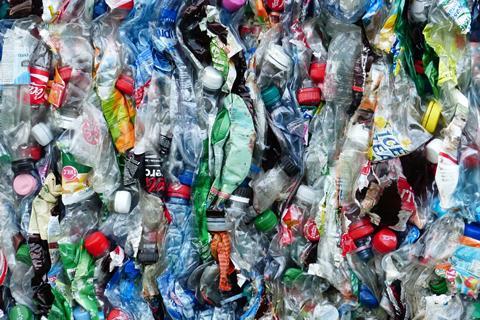Researchers have deciphered the metabolic mechanisms that enable the bacterium Comamonas testosteroni to digest complex wasste from plants and plastics, potentially leading to novel biotechnology platforms that harness the microbe to help recycle plastic waste.

Comamonas species are found nearly everywhere — including in soils and sewage sludge. C. testosteroni first caught researchers’ attention with its natural ability to digest synthetic laundry detergents. After further analysis, scientists at Northwestern University discovered that this natural bacterium also breaks down compounds from plastic and lignin (fibrous, woody waste from plants). The research is published in Nature Chemical Biology.
Although other researchers have worked to engineer bacteria that can breakdown plastic waste, Aristilde believes bacteria with natural abilities to digest plastics hold more promise for large-scale recycling applications.
“Soil bacteria provide an untapped, underexplored, naturally occurring resource of biochemical reactions that could be exploited to help us deal with the accumulating waste on our planet,” said Northwestern’s Ludmilla Aristilde. “We found that the metabolism of C. testosteroni is regulated on different levels, and those levels are integrated. The power of microbiology is amazing and could play an important role in establishing a circular economy.”
The study was led by Aristilde, an associate professor of civil and environmental engineering at Northwestern’s McCormick School of Engineering, and Ph.D. student Rebecca Wilkes, who is the paper’s first author. The study included collaborators from University of Chicago, Oak Ridge National Laboratory and Technical University of Denmark.
Sugar-free diet
“Engineering bacteria for different purposes is a laborious process,” Aristilde said. “It is important to note that C. testosteroni cannot use sugars, period. It has natural genetic limitations that prevent competition with sugars, making this bacterium an attractive platform.”
What C. testosteroni really wants, though, is materials such as plastic and lignin containing compounds with a ring of carbon atoms.
“These are carbon compounds with complex bond chemistry,” Aristilde said. “Many bacteria have great difficulty breaking them apart.”
To study how C. testosteroni degrades these complex forms of carbon, Aristilde and her team combined multiple forms of “omics”-based analyses: transcriptomics (study of RNA molecules); proteomics (study of proteins); metabolomics (study of metabolites); and fluxomics (study of metabolic reactions). Comprehensive “multi-omics” studies are massive undertakings that require a variety of different techniques. Aristilde leads one of few labs that carries out such comprehensive studies.
Mapping pathways
By examining the relationship among transcriptomics, proteomics, metabolomics and fluxomics, Aristilde and her team mapped the metabolic pathways that bacteria use to degrade plastic and lignin compounds into carbons for food. Ultimately, the team discovered that the bacteria first break down the ring of carbons in each compound. After breaking open the ring into a linear structure, the bacteria continue to degrade it into shorter fragments.
“We started with a plastic or lignin compound that has seven or eight carbons linked together through a core six-carbon circular shape forming the so-called benzene ring,” Aristilde explained. “Then, they break that apart into shorter chains that have three or four carbons. In the process, the bacteria feed those broken-down products into their natural metabolism, so they can make amino acids or DNA to help them grow.”
Aristilde also discovered that C. testosteroni can direct carbon through different metabolic routes. These routes can lead to useful by-products that can be used for industrially relevant polymers such as plastics. Aristilde and her team are currently working on a project investigating the metabolism that triggers this polymer biosynthesis.
“These Comamonas species have the potential to make several polymers relevant to biotechnology,” Aristilde said. “This could lead to new platforms that generate plastic, decreasing our dependence on petroleum chemicals. One of my lab’s major goals is to use renewable resources, such as converting waste into plastic and recycling nutrients from wastes. Then, we won’t have to keep extracting petroleum chemicals to make plastics, for instance.”







No comments yet